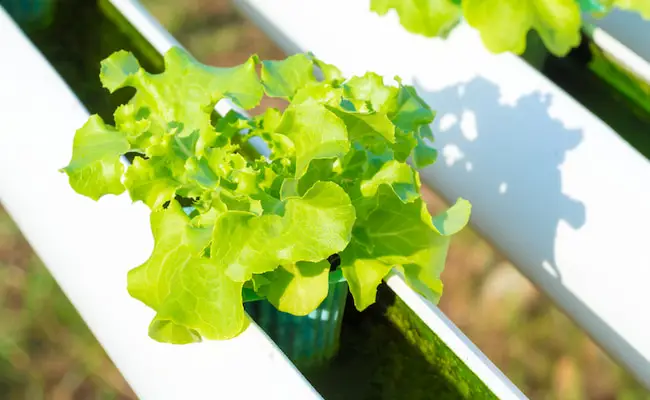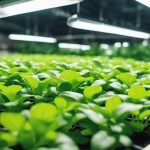Nutrient lockout is a common issue many hydroponic gardeners face, and it can significantly impede plant growth by preventing your plants from absorbing essential nutrients. This often results in stunted growth and can cause a range of symptoms from discoloration of leaves to complete halt in development. Knowing how to fix nutrient lockout in hydroponics after correctly identifying it is crucial for maintaining a healthy garden.

When you’re cultivating plants hydroponically, maintaining the delicate balance of nutrients in the water is vital. An imbalance can lead to nutrient lockout, where your plants are unable to take in the nutrition they need, even though it’s right in front of them. This might seem daunting, but with the right steps, you can get your garden back on track. The key is to monitor your system carefully and take corrective action swiftly to prevent long-term damage to your plants.
Identifying Nutrient Lockout
When your plants are not thriving despite proper feeding, you might be dealing with nutrient lockout. It’s crucial to recognize it early to save your plants and restore their health.
Nutrient Lockout Symptoms
Nutrient lockout often manifests through alterations in your plants’ appearance. Look for:
- Yellowing Leaves: This is a telltale sign that something is amiss.
- Discoloration: Other forms of discoloration apart from yellowing may occur.
- Damaged Leaves: Leaves may show signs of damage beyond discoloration, such as leaves curling up and drying out.
You’ll also notice stunted growth, as nutrient uptake is critical for plant development. If these symptoms are present, it’s time to investigate further.
Difference Between Nutrient Burn, Deficiency and Lockout
Understanding the distinctions between nutrient issues is essential for proper diagnosis:
- Nutrient Burn: This happens when plants receive too many nutrients, typically evidenced by the tips of the leaves turning brown or appearing “burnt.” Read our complete guide on how to treat nutrient burn.
- Deficiency: A lack of nutrients leads to deficiencies, which can cause symptoms like slower growth or pale leaves.
- Lockout: Nutrient lockout means the roots cannot absorb nutrients due to imbalances, usually in the pH levels of your nutrient solution.
To distinguish nutrient lockout from other issues, you’ll need to consider the overall condition of your plants and possibly perform a pH test of your nutrient solution. If the symptoms match and the pH is outside the optimal range for plant uptake, typically between 5.5 and 6.5, then nutrient lockout could well be the issue at hand.
Understanding the Causes of Nutrient Lockout
Before diving into the specific causes of nutrient lockout in your hydroponic system, it’s essential for you to understand that this issue typically stems from imbalances within your system. Let’s explore what these imbalances could be and how they affect your plants’ ability to absorb essential nutrients.
pH Imbalances
The pH level of your nutrient solution is crucial for nutrient uptake. If the pH is above 7 or below 5.5, your plants may struggle to absorb certain minerals, including iron, calcium, magnesium, and manganese. Ensuring your solution stays within the optimal range of 5.5 to 6.5 allows these nutrients to remain available to your plants.
Excess Nutrients or Fertilizers
While it’s tempting to think that more food equals better growth, the opposite can be true; excess nutrients or fertilizers can lead to lockout or burn. The former happens when too many nutrients accumulate, so they can create a competitive environment where minerals like calcium and magnesium block each other, reducing availability.
- Watch for signs of build-up
- Stick to recommended nutrient levels
Interaction of Minerals
Minerals in your hydroponics system can interact in ways that prevent plant uptake. For example, a high concentration of magnesium can make it harder for your plants to take in calcium and iron. These interactions can lead to deficiencies, even when there’s an abundance of nutrients in your solution.
Correcting Nutrient Lockout
Fixing nutrient lockout is essential to restoring your plants’ ability to absorb the needed nutrients. To tackle this, you’ll need to adjust pH levels, flush your system properly, and ensure your nutrient concentration is optimized.
Adjusting pH Levels
First, you should check the pH level of your nutrient solution using a reliable pH meter. Your plants’ ability to absorb nutrients is highly pH-dependent. Most hydroponic systems require an ideal pH range between 5.5 and 6.5. If the pH is too high or too low, it can cause a lockout. To correct this, gradually add pH-balanced water or pH adjusters until you reach the optimal range.
Flushing the System
If your nutrient solution’s pH is correct, but your plants are still experiencing lockout, flushing your system may be necessary. This involves running ph-balanced water through the system to remove excess salts and minerals that can cause lockout. Stop feeding your plants and use pH-balanced water to flush out the accumulated nutrients in the medium.
Optimizing Nutrient Concentration
Finally, take a look at the concentration of your nutrient solution. Overfeeding can contribute to lockout, as excess nutrients can precipitate, making them unavailable to the plants. After flushing, reintroduce a balanced nutrient solution at a lower concentration to avoid future issues. Keep a close eye on your plants to gauge how they respond to the changes in the solution. Also, monitor individual mineral levels and adjust proportions to maintain balance.
Preventing Nutrient Lockout
To secure the well-being of your hydroponic garden, it’s essential to understand preventive measures against nutrient lockout – a condition that hampers your plants’ ability to absorb essential nutrients.
Routine Maintenance
Your hydroponic system requires regular checks to ensure everything is functioning optimally. Routine maintenance includes periodically cleaning system components like pumps, feed lines, and reservoirs to avoid the buildup of salts and minerals that can lead to nutrient lockout. Keeping your system clean will also make it easier to spot any irregularities before they develop into bigger issues.
Monitoring and Adjusting
Keeping a close eye on the pH range of your nutrient solution is key to preventing nutrient lockout. Plants in hydroponic systems thrive within a specific pH range, typically between 5.5 to 6.5. Regularly test your solution with a reliable pH meter and use pH adjusters to correct any discrepancies. This not only helps prevent nutrient lockout but also ensures your plants are able to take in nutrients efficiently.
Choosing the Right Nutrients
Selecting the right nutrients for your hydroponic setup is crucial. Each plant has unique nutrient needs that, when met, can prevent the possibility of nutrient lockout. Be sure to use high-quality nutrient mixes specifically designed for hydroponic use and follow the recommended dosages to avoid overloading your plants, which can trigger lockout conditions. Making a proper hydroponic nutrient mix is crucial.
Utilizing these proactive steps, you can maintain a healthy hydroponic system and enjoy the fruits of your labor with lush, vigorous plant growth.
Frequently Asked Questions
Navigating through the common concerns about nutrient lockout can help ensure your hydroponic garden remains healthy and productive.






